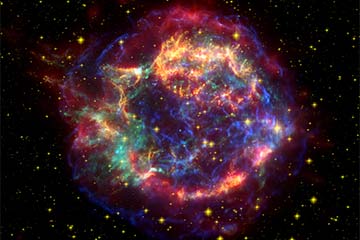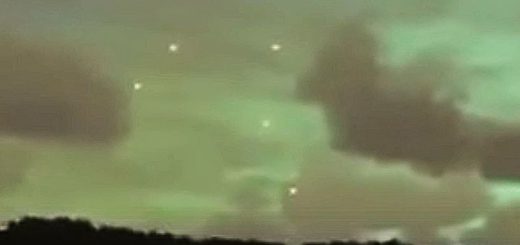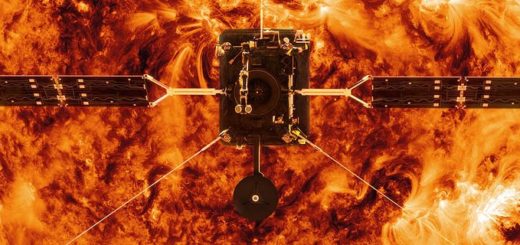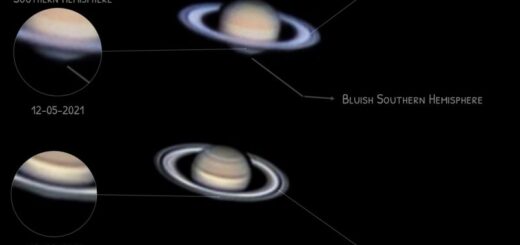Could the power of a neutron star be harnessed?

While filling your tank at the gas station and watching the dollars and cents tick up faster and faster, you might find yourself wondering when all that much-hyped alternative energy is going to make its way to your Camry. Weren’t we supposed to have cars running on solar power and corn stalks by now? Wasn’t your bedroom lamp supposed to be powered by nuclear fusion at this point?
Turns out that finding cheap, viable types of alternative fuel and energy isn’t so easy — on Earth, that is. But when you hear the amazing things that space provides — stars with massive energy outputs, moons with helium to spare — you might be under the impression that alternative energy isn’t that hard to come by, if only we could think up a good system for collecting and transporting galactic power.
The allure of getting our hands on the massive amounts of energy produced by something like a neutron star seems quite appealing. We all know that our sun can provide a lot of energy. But what about other types of stars?
A neutron star is the left-over remnant of a star that is bigger than seven of our suns at the end of its life. Such a star ends its life cycle in a supernova explosion, and the leftover core of the star collapses, causing protons and electrons to smoosh together at such dense rates that neutrons are formed. Neutron formation can stop the further collapse of the star into a black hole. After the supernova explosion, the neutron star would have a mass a couple times greater than our sun), packed into a space about the size of Philadelphia. If an astronaut decided to bring a teaspoon of neutrons from a neutron star, it would weigh as much as a mountain [source: Goldberg].
Another thing: Neutron stars spin like nobody’s watching. (And as far as we know, nobody is — well, we are with our X-ray observatories in space.) Along with crazy-strong magnetic fields (which literally bend the shape of atoms), the spin also creates a whirling dervish of an electrical field [source: Chandra]. The spin acts as a generator, which powers massive storms of particles that are 30 million times the voltage of your everyday, ho-hum lightning bolt [source: Chandra]. So could we harness that energy for ourselves? Just take a little neutron power to run the Roku?
Predictably, no. It is precisely because neutron stars have so much energy and power that we can’t yet dream of taking it for ourselves. Let’s just run through the list of reasons we are not going to be harnessing the power of neutron stars anytime soon:
One, the nearest little guy is 400 light years away. So.
Next: How are you going to land on a neutron star that is spinning hundreds or thousands of times a second? Discuss.
Then: Even run-of-the-mill neutron stars have magnetic fields 10 million times stronger than Earth. You’re dead.
After that: Gravity is a hundred billion times stronger on the neutron star than on Earth. Still very dead.
In other words, we can’t even nudge our way near a neutron star without disastrous effects, let alone grab any of its resources or power. If a super-magnetically charged neutron star (those that have a magnetic field a quadrillion times stronger than ours) floated even 100,000 miles (160,934 kilometers) near us? Every single credit card in the world would be demagnetized [source: Edmonds].
So, nope, we’re probably not going to wrassle us up some neutron star power anytime soon. Keep pumping that gas.



 Creators of mankind
Creators of mankind Description of “Tall white aliens”
Description of “Tall white aliens” Where they came from?
Where they came from? About hostile civilizations
About hostile civilizations The war for the Earth
The war for the Earth “Tall white aliens” about eternal life
“Tall white aliens” about eternal life Video: “Nordic aliens”
Video: “Nordic aliens” Aliens
Aliens Alien encounters
Alien encounters The aliens base
The aliens base UFO
UFO Technology UFO
Technology UFO Underground civilization
Underground civilization Ancient alien artifacts
Ancient alien artifacts Military and UFO
Military and UFO Mysteries and hypotheses
Mysteries and hypotheses Scientific facts
Scientific facts


















